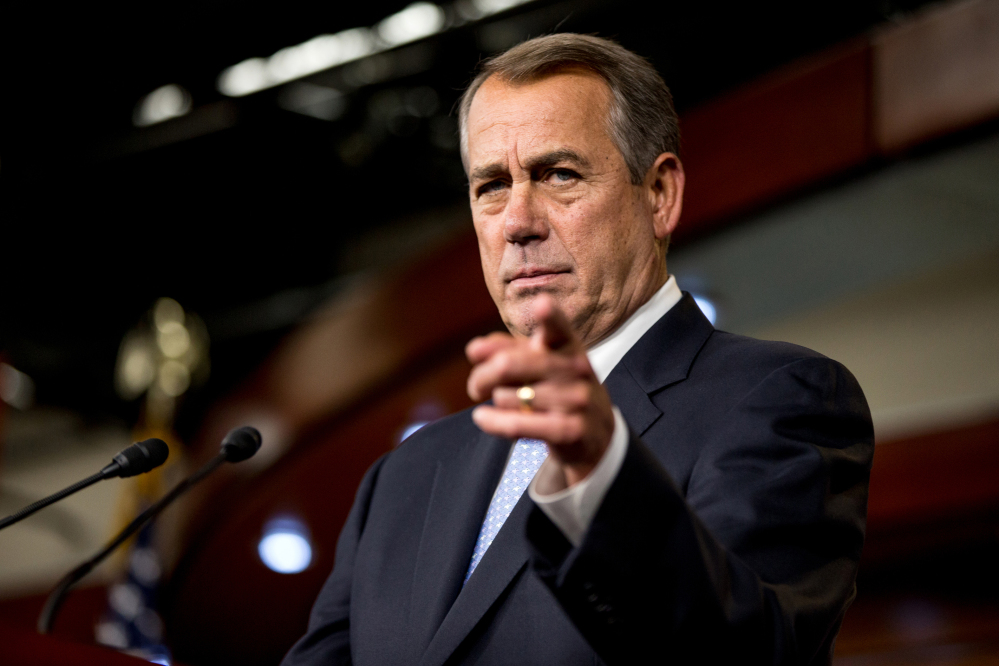WASHINGTON – Republicans say bipartisan legislation reworking how Medicare pays doctors is a milestone toward curbing the huge, growing benefit program.
It’s “the first real entitlement reform in decades,” says House Speaker John Boehner, R-Ohio, using Washington jargon for programs that automatically pay people who qualify.
Many deficit foes are less impressed.
A look at the debate over how significantly the legislation, which is nearing congressional approval, would bolster Medicare’s finances:
WHAT’S WRONG WITH MEDICARE?
Nothing a few trillion bucks wouldn’t fix. The program, which helps pay medical bills for more than 50 million elderly people, is expected to spend more than $600 billion this year. That’s one-sixth of the entire federal budget. The nonpartisan Congressional Budget Office expects that price tag to nearly double by 2025 as more baby boomers retire.
WHAT ENTITLEMENT REFORM IS BOEHNER TALKING ABOUT?
The budget office says the Medicare legislation would cost $214 billion over the coming decade. The House approved it overwhelmingly March 26, and Senate passage seems likely this month.
Besides helping physicians, the bill finances health care for children and low-income people. Most of its cost is for replacing a law that has threatened repeated, steep reductions in physician reimbursements for treating Medicare patients. Doctors say such cuts, which Congress usually prevents, could make them stop seeing Medicare recipients.
Most costs over the next decade – $141 billion – would be financed by making federal deficits even larger. To pay for around half the rest, federal payments would be reduced to hospitals, home health care companies and other providers.
The bill would also squeeze $35 billion from beneficiaries.
Most – $34 billion – would come from raising monthly premiums for medical care and prescription drugs for top-earning Medicare recipients beginning in 2018, and making additional higher-income recipients pay larger premiums starting in 2020.
An additional $1 billion would come from requiring people buying Medigap insurance, which covers costs Medicare doesn’t pay, to incur out-of-pocket expenses before Medigap coverage begins. This would start for people buying new policies in 2020. Currently, some Medigap policies protect purchasers from virtually any out-of-pocket costs.
It’s these beneficiary changes Republicans are crowing about.
DO REPUBLICANS HAVE REASON TO DECLARE VICTORY?
To a degree, yes.
They modestly curbed Medicare without raising taxes, which Democrats normally demand in exchange for squeezing benefit programs.
There’s true savings because the more Medicare recipients pay in premiums, the less the program needs government money. And making Medigap policy holders pay more for their own care should encourage them to watch their medical spending, easing some Medicare expenses.
Republicans say the initial $35 billion in savings would escalate the second decade from now as the number of Medicare recipients and medical costs grow.
They cite an estimate by Douglas Holtz-Eakin, a Republican-appointed former Congressional Budget Office director, that those changes would reduce Medicare spending by $230 billion from 2026 through 2035. This helped win votes for the bill from House conservatives unhappy over its projected deficit increases between now and 2025.
WHAT’S WRONG WITH THE GOP ARGUMENT?
Critics say saving $35 billion over a decade pales compared to the nearly $9 trillion Medicare is expected to spend over that period. That’s a saving of about one-third of 1 percent.
They say President Barack Obama, House Republicans and the 2010 bipartisan commission headed by former Democratic White House chief of staff Erskine Bowles and former Sen. Alan Simpson, R-Wyo., have all proposed more robust plans for bolstering Medicare than what’s in the bill.
“These are wimpy forms of important policies,” said Maya MacGuineas, president of the bipartisan Committee for a Responsible Federal Budget.
The critics say Holtz-Eakins’ estimate covered only potential savings during the decade he examined, not the Medicare bill’s net expenditures. They note that the budget office, Holtz-Eakin’s old employer, warned of “considerable uncertainty” over such long-range predictions and said the bill might save or cost money two decades from now, with small savings in the middle of their estimate range.
IS THIS THE FIRST REAL ENTITLEMENT REFORM IN DECADES?
That’s debatable.
Under President George W. Bush, Congress increased Medicare medical premiums for higher-earning recipients for the first time, as part of the 2003 law creating the program’s prescription drug coverage. The higher premiums started in 2007, and around 5 percent of recipients pay them today.
Obama’s 2010 health care law required upper-income people to pay higher prescription drug premiums, too.
That law also froze the income levels above which people pay higher premiums through 2019, instead of increasing those thresholds annually with inflation. This meant more people owed the bigger premiums each year as their incomes grew.
Republicans don’t consider those savings true reform because they came packaged with new, expensive benefit programs – Medicare’s prescription drug coverage and Obama’s health care overhaul.
Send questions/comments to the editors.



Success. Please wait for the page to reload. If the page does not reload within 5 seconds, please refresh the page.
Enter your email and password to access comments.
Hi, to comment on stories you must . This profile is in addition to your subscription and website login.
Already have a commenting profile? .
Invalid username/password.
Please check your email to confirm and complete your registration.
Only subscribers are eligible to post comments. Please subscribe or login first for digital access. Here’s why.
Use the form below to reset your password. When you've submitted your account email, we will send an email with a reset code.